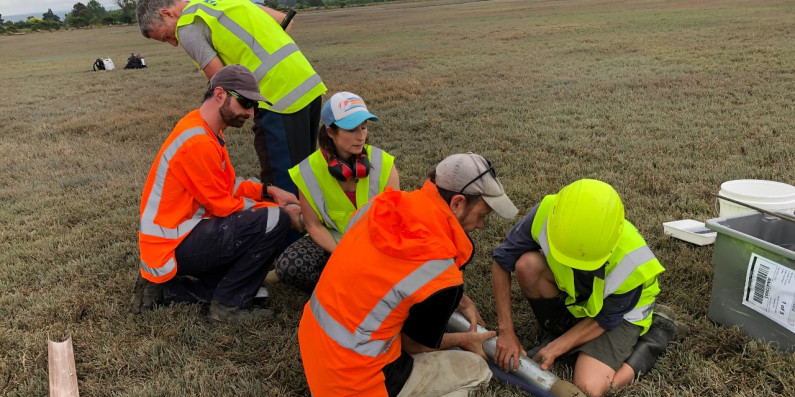The project is led by the Tasman Environmental Trust (TET) and codesigned and delivered in partnership with the Cawthron Institute, Beca, Ngāti Apa ki te Rā Tō, Nelson City Council, Onetahua Restoration, Manawhenua ki Mohua and HealthPost Nature Trust.
By harnessing local expertise and enthusiasm, weaving in the unique knowledge and kaitiaki role of Māori, and collaborating with national and international experts, ‘Core and Restore’ is helping the community see coastal ecosystems in a new light.
Launched in November 2021, the project is currently in its pilot phase. The project team is trialling different methods to determine the most practical and cost-effective ways to measure the region’s coastal blue carbon. This includes taking sediment core samples to measure how much carbon is stored in saltmarsh habitats in the Waimeha/Waimea Inlet and in seagrass habitats at Onetahua/Farewell Spit.
Alongside sediment coring and analysis, the team is also involving the community in a citizen science experiment to determine whether local seagrass, saltmarsh and mud habitats are sequestering or releasing carbon.
Following the pilot, TET plans to hold whole-community hui to build on what has been learned and co-design the next steps for expanding this mahi across Te Tauihu.
